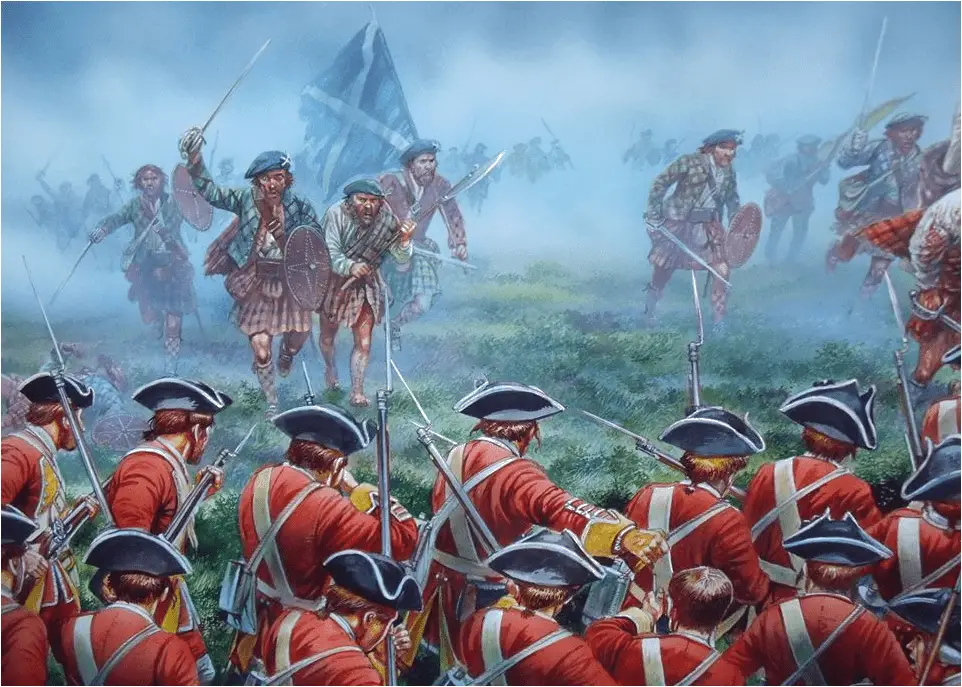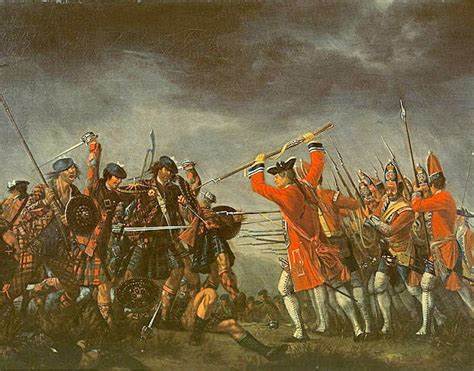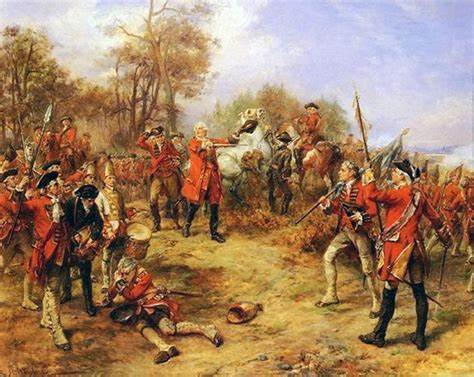
In the annals of Scottish history, the Battle of Culloden Clans stands as a poignant and pivotal moment.
This historic encounter etched its mark on the final act of the Jacobite Rising of 1745—an audacious endeavor to restore the exiled Stuart dynasty to the British throne.
Within the bounds of this article, we venture into the events leading to the battlefield, the tactical maneuvers deployed by both factions and the far-reaching repercussions that shaped the destiny of Scottish clans and their cherished cultural heritage.
The Road to Culloden Moor
- Read also: What Was the Shortest War in History
- Read also: Victorian Era Fashion: A Look at the Victorian Era Dress
Jacobite Rising of 1745
The Jacobite Rising of 1745, also known as the Forty-Five Rebellion, was a daring endeavor led by Charles Edward Stuart, the young and charismatic Bonnie Prince Charlie.
Seeking to reclaim the British throne for his exiled father, James Stuart, Prince Charles rallied supporters across Scotland, particularly from the Highland clans.
The Jacobites’ fervor and loyalty to the Stuart cause were driven by a potent blend of historical grievances, nationalist sentiments, and romantic ideals.
Bonnie Prince Charlie’s Cause
The figure of Bonnie Prince Charlie, with his claim to the throne and the promise of a new beginning, ignited hope and passion among the Jacobites.
His march into England garnered initial successes, with his army capturing Edinburgh and defeating government forces at Prestonpans.
However, the tide would soon turn, leading to the ultimate confrontation on the moor of Culloden.
The Fateful Encounter
Jacobite Army vs. Government Forces
On that fateful day, the Jacobite army, numbering around 5,000 men, faced off against the government forces commanded by the Duke of Cumberland, son of King George II.
The government forces, composed of well-trained and disciplined soldiers, outnumbered the Jacobites significantly.
Battle Strategies and Tactics
The two armies positioned themselves for battle on the marshy and uneven terrain of Culloden Moor.
The Jacobites relied on their traditional Highland charge, a fearsome display of ferocity and bravery, while the government forces adopted disciplined lines and firepower.
Unfortunately, the Jacobites’ charge was met with devastating volleys of musket fire and cannon shots, leading to significant casualties and chaos within their ranks.

Tragic Outcome and Aftermath
Devastating Defeat of the Jacobites
The Battle of Culloden proved to be a crushing defeat for the Jacobites.
The government forces’ disciplined tactics, combined with their superior numbers, overwhelmed the Highland clansmen.
The battle lasted less than an hour, resulting in thousands of Jacobite casualties and a swift and decisive victory for the government forces.
The End of Highland Clan Warfare
The aftermath of Culloden spelled the demise of the traditional Highland clan warfare system.
The British government launched a campaign of suppression, aimed at dismantling the power of the Highland clans and extinguishing their way of life.
Implementing harsh measures, including the infamous Highland Clearances, led to the forced eviction and dispersal of numerous Highland families from their ancestral lands.
The Legacy of Culloden
Impact on Scottish Culture
The Battle of Culloden left an indelible mark on Scottish culture and identity.
The Jacobites’ defeat and subsequent repression of Highland customs and language instilled a profound sense of loss and nostalgia among the Scottish populace.
It also contributed to the romanticization of the Highland way of life, igniting a revival of Scottish culture and heritage in the centuries that followed.
Commemoration and Remembrance
Culloden Moor stands as a solemn and poignant site of remembrance for the lives lost in the battle.
Visitors from around the globe meet to offer their appreciation and gain bits of knowledge about this groundbreaking episode in Scottish history.
Various landmarks and memorials have been raised to respect the fallen soldiers and protect the memory of the conflict.
The Myth and Reality of Culloden
Romanticized Accounts
Over time, the Battle of Culloden has been the subject of numerous romanticized accounts and depictions, often portraying the Jacobites as gallant heroes fighting for a just cause.
Such portrayals have contributed to the creation of enduring myths surrounding the battle and its participants.
Historical Accuracy
While the battle remains an evocative and significant event, historians strive to present a balanced and accurate account of the conflict.
The complexities of the Jacobite Rising, the motivations of its leaders, and the consequences of the battle are subject to ongoing scholarly examination.

The Battlefield Today
Preserving the Historic Site
Preservation and protection of the Culloden battlefield have been a long-standing commitment.
With unwavering dedication, organizations and individuals strive to uphold the historical significance of this site, preserving its essence as a vital part of Scottish heritage.
Through continuous efforts, they ensure that future generations can connect with the past and cherish this important piece of history.
Visitor Center and Interpretation
At the heart of the Culloden Battlefield lies the Visitor Centre, a place that offers a captivating and enlightening journey for visitors.
Through interactive exhibits, valuable artifacts, and engaging presentations, guests can immerse themselves in the battle’s significance, its historical background, and the profound influence it had on the Scottish heritage.
The center serves as a vital platform for fostering a deeper connection with the past and gaining invaluable insights into this pivotal moment in history.
- Read also: Africa in the Middle Ages: Exploring Empires, Achievements, and Falls
- Read also: 10 Richest Person in History: A Journey Through Time and Wealth
Conclusion
The Battle of Culloden Clans remains a poignant and pivotal event in Scottish history, marking the final chapter of the Jacobite Rising of 1745.
The clash of ideologies and loyalties on Culloden Moor shaped the destiny of the Highland clans and their cultural heritage.
Despite its tragic outcome, the battle’s legacy endures, inspiring remembrance and reflection on the complexities of history.
As visitors pay homage to the fallen, they bear witness to a defining moment in Scotland’s past, one that continues to resonate in the present.
Frequently Asked Questions (FAQs)
The Jacobites were supporters of the exiled Stuart dynasty and their claim to the British throne. They sought to restore the Stuarts to power during various uprisings in British history.
Bonnie Prince Charlie, also known as Charles Edward Stuart, was the leader of the Jacobite Rising of 1745 and the commander of the Jacobite army at the Battle of Culloden.
The Battle of Culloden marked the end of traditional Highland clan warfare and led to the suppression of Highland culture and traditions by the British government.
Yes, various artifacts from the Battle of Culloden, including weapons, clothing, and personal items, are preserved and displayed at the Culloden Battlefield Visitor Centre.
Yes, the Culloden Battlefield is open to the public, and visitors can explore the historic site and learn about the battle’s significance at the Culloden Battlefield Visitor Centre.



